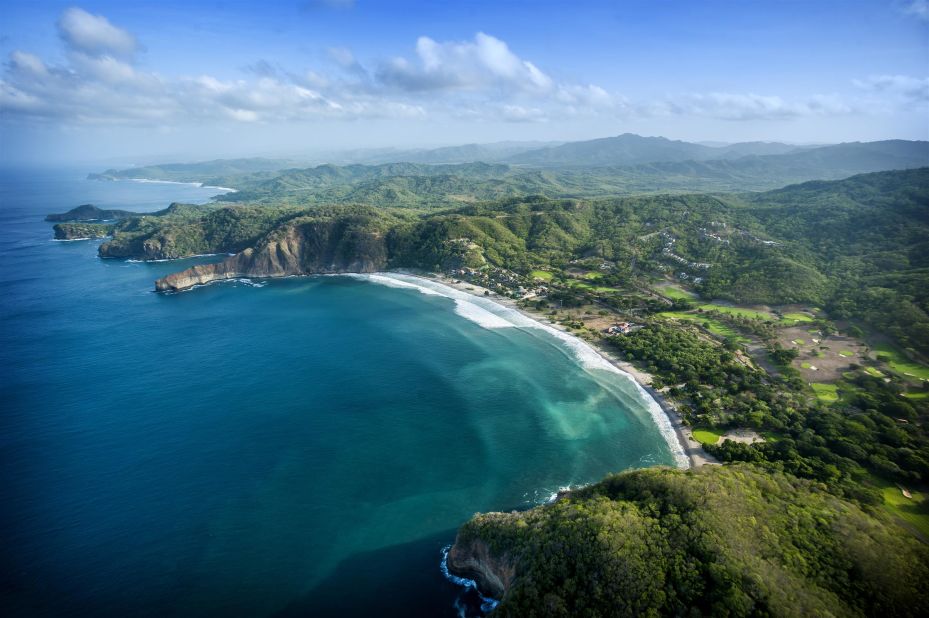
Introduction:
Nicaragua, the land of lakes and volcanoes, is a country that captivates with its diverse landscapes, rich cultural tapestry, and a history that unfolds like a living chronicle. Nestled in the heart of Central America, Nicaragua offers travelers a journey through pristine natural wonders, colonial heritage, and the warmth of its people. This extensive exploration delves into the essence of Nicaragua, unveiling the stories of its volcanic wonders, serene lakes, vibrant cities, and the resilience of a nation that has weathered both natural and historical storms.
Geography and Landscape:
- Volcanic Majesty:
- Nicaragua is renowned for its impressive chain of volcanoes, contributing to its moniker, the “Land of Volcanoes.” From the towering peaks of Momotombo and Concepción to the accessible hiking trails of Telica, the volcanic landscape offers both scenic beauty and adventure.
- Cocibolca, the Great Lake:
- Lake Nicaragua, or Cocibolca, stands as one of the largest freshwater lakes in Central America. Its vast expanse is dotted with the Islets of Granada, a collection of small islands with diverse ecosystems and vibrant communities.
History and Cultural Heritage:
- Indigenous Roots:
- Nicaragua’s history is deeply rooted in the indigenous cultures that inhabited the region long before the arrival of European explorers. Tribes such as the Miskito, Rama, and Garifuna have left their mark on the country’s cultural fabric.
- Colonial Legacy:
- The Spanish conquistadors, led by Francisco Hernandez de Córdoba, arrived in the early 16th century, initiating a period of Spanish colonization. The colonial legacy is evident in the architecture of cities like Granada and León, where beautifully preserved churches and buildings showcase the country’s colonial past.
Historical Landmarks:
- Granada: Architectural Gem:
- Granada, one of Nicaragua’s oldest cities, stands as a testament to its colonial heritage. The city’s charming streets are lined with pastel-colored buildings, and landmarks like the Granada Cathedral and San Francisco Convent evoke the grandeur of a bygone era.
- León: Cultural Hub:
- León, another colonial gem, boasts a vibrant cultural scene. The UNESCO-listed León Cathedral, with its captivating architecture, and the Ortiz-Gurdián Art Foundation, housing an extensive collection of Latin American art, showcase the city’s cultural richness.
- Ometepe Island: Natural and Cultural Fusion:
- Ometepe Island, formed by two volcanoes rising from Lake Nicaragua, is a unique blend of natural beauty and cultural significance. The island’s archaeological sites and petroglyphs provide insights into the pre-Columbian cultures that once thrived here.
Natural Wonders:
- Masaya Volcano: Gateway to the Underworld:
- The Masaya Volcano National Park, often referred to as the “Gateway to the Underworld,” allows visitors to peer into an active volcano. The park also features the Santiago crater, emitting plumes of volcanic gases that add to the otherworldly atmosphere.
- Mombacho Volcano: Cloud Forest Oasis:
- Mombacho Volcano, adorned with a cloud forest, offers a respite from the tropical heat. Visitors can explore hiking trails, zip-line through the canopy, and witness the diverse flora and fauna that thrive in this unique ecosystem.
- Bosawás Biosphere Reserve: Biodiversity Sanctuary:
- The Bosawás Biosphere Reserve, a UNESCO World Heritage Site, is one of Central America’s largest protected areas. Its dense rainforests are home to an incredible array of wildlife, including jaguars, tapirs, and a myriad of bird species.
Culture and Traditions:
- Folkloric Festivals:
- Nicaragua’s cultural calendar is punctuated with vibrant festivals celebrating the country’s folklore and traditions. The Palo de Mayo festival, marked by lively music and dance, and the colorful Indio Maíz Carnival are among the events that showcase Nicaragua’s cultural vibrancy.
- Arts and Crafts:
- Nicaraguan arts and crafts reflect the diverse influences of indigenous, Spanish, and African cultures. Traditional handwoven textiles, pottery, and wooden carvings are integral to the country’s artistic heritage.
Economy and Development:
- Agriculture and Export:
- Agriculture plays a crucial role in Nicaragua’s economy, with coffee, bananas, and tobacco among the key exports. Sustainable agriculture practices and fair trade initiatives have gained prominence, contributing to both economic development and environmental conservation.
- Tourism and Ecotourism:
- Nicaragua’s tourism industry has been steadily growing, attracting travelers seeking both adventure and relaxation. The country’s commitment to ecotourism is evident in initiatives promoting sustainable travel and the preservation of its natural wonders.
Challenges and Resilience:
- Natural Disasters:
- Nicaragua, situated in a seismically active region, faces the constant threat of earthquakes and volcanic activity. The country has shown resilience in the aftermath of natural disasters, rebuilding communities and infrastructure to withstand future challenges.
- Political History:
- Nicaragua’s political history, marked by periods of instability and conflict, has tested the resilience of its people. The Sandinista Revolution, the Contra War, and subsequent political developments have shaped the nation’s trajectory, emphasizing the importance of social and political stability.
Conclusion:
Nicaragua, with its breathtaking landscapes, rich cultural heritage, and the warmth of its people, invites travelers to explore a country that is both diverse and resilient. From the summit of volcanic peaks to the shores of tranquil lakes, and from the colonial elegance of Granada to the vibrant streets of León, Nicaragua unfolds as a mosaic of experiences waiting to be discovered. As the country continues to embrace sustainable development and ecotourism, it stands poised to share its natural and cultural treasures with the world, inviting all who venture here to become part of the story of this enchanting Central American nation.




